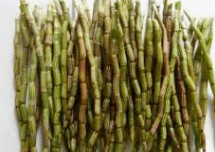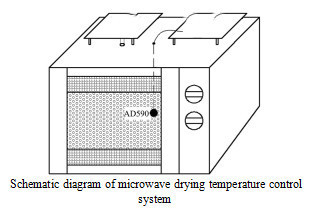
- Shandong Microwave Machinery Co.,Ltd.
- To be the Leader of microwave drying and edible oil refining equipments Manufacturer
Home> Company News> Effects of different drying methods on polysaccharide and mannose content of Dendrobium officinale
- AddressNo. 225, Huangqiao Village, Beiyuan, Tianqiao District, Jinan, Shandong, China
- Factory AddressNo. 225, Huangqiao Village, Beiyuan, Tianqiao District, Jinan, Shandong, China
- Phone(Working Time)+86 0531 85064681
- Phone(Nonworking Time)0086-15020017267
- Fax+ 86 0531 85064682
Effects of different drying methods on polysaccharide and mannose content of Dendrobium officinale
2019-01-17 14:52:47Objective: To study the effects of different drying methods on the contents of polysaccharides and mannose in Dendrobium officinale, and to provide scientific basis for the processing methods of Dendrobium officinale.
Methods: Dendrobium officinale was dried by infrared ray, drying, microwave drying equipment and vacuum freezing. The content of polysaccharides was determined by colorimetry and mannose was determined by high performance liquid chromatography. The effects of different drying methods on the content of polysaccharides and mannose were analyzed and compared.
Results: The contents of polysaccharides and mannose in Dendrobium officinale by different drying methods were quite different. The content of polysaccharides and mannose in vacuum freeze-drying samples was the highest, which was significantly better than the other three drying samples (P < 0.05).
CONCLUSION: Vacuum freeze-drying can preserve the polysaccharides and mannose in the samples to the greatest extent.
[Key words] Dendrobium candidum microwave drying; drying method; polysaccharide; mannose; high performance liquid chromatography


Dendrobium officinale is a perennial epiphytic herb of Dendrobium in Orchidaceae. It is a valuable traditional Chinese herbal medicine. Its fresh or dry stems are also known as "Dendrobium officinale". Dendrobium candidum is the first of China's "nine immortal herbs". It has good effects of nourishing yin and clearing heat, nourishing body and benefiting stomach, relieving cough and moistening lung. It has been known as "gold in medicine" since ancient times, and has a reputation of "life-saving immortal herb" among the people.
Polysaccharide is the main active ingredient of Dendrobium officinale. It has been reported in the literature that Dendrobium officinale has antioxidant, immune enhancement and anti-inflammatory activities. The content of total polysaccharide and mannose is the quantitative index of Dendrobium officinale. The Pharmacopoeia of the People's Republic of China stipulates that the content of polysaccharide and mannose in Dendrobium officinale is not less than 25% and 13.0%-38.0%.
Because of the difficulty of preservation of Dendrobium officinale fresh medicine, traditional processing technology needs to be dried. In the process of heating and drying, the quality and effective ingredients of Dendrobium officinale are often affected to varying degrees.
The results showed that the structure and pharmacological properties of polysaccharides could change irreversibly during high temperature drying, which affected the content of polysaccharides and the quality of medicinal materials. In order to further investigate the effect of drying methods on the main active ingredients of Dendrobium officinale, four drying methods including drying, infrared, microwave and vacuum freezing were used to dry Dendrobium officinale. The effects of different drying methods on Dendrobium officinale were investigated by comparing the contents of polysaccharides and mannose in different drying products.
 High efficiency food beverage factory stone paper production line
High efficiency food beverage factory stone paper production line Factory price Fully automatic Machine PP/PS Plastic Sheet Production Line
Factory price Fully automatic Machine PP/PS Plastic Sheet Production Line used deformered bar rolling mill production line
used deformered bar rolling mill production line Manufacturing plant automatic factory puffed sticky rice cracker production line
Manufacturing plant automatic factory puffed sticky rice cracker production line Production Line Pp Ppr Plastic Pipe Making Machine 20-63mm Multi-layer Extrusion Production Line For Water Supply
Production Line Pp Ppr Plastic Pipe Making Machine 20-63mm Multi-layer Extrusion Production Line For Water Supply